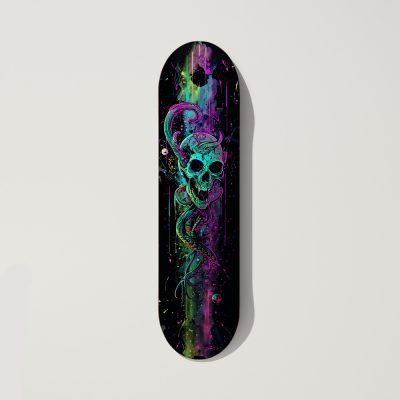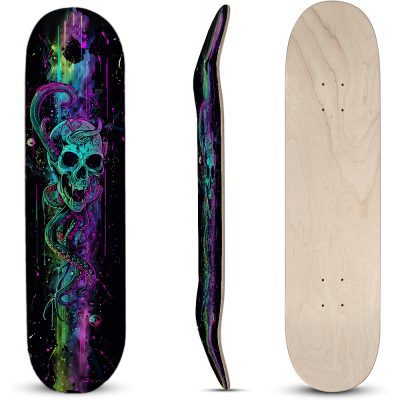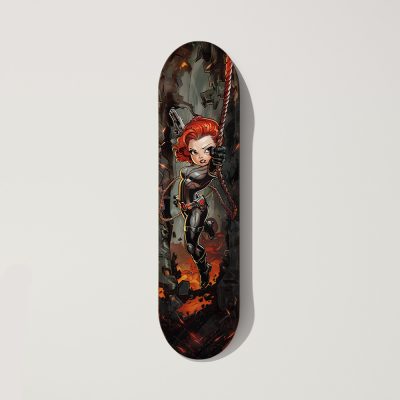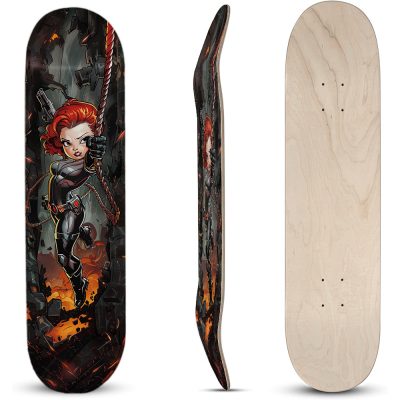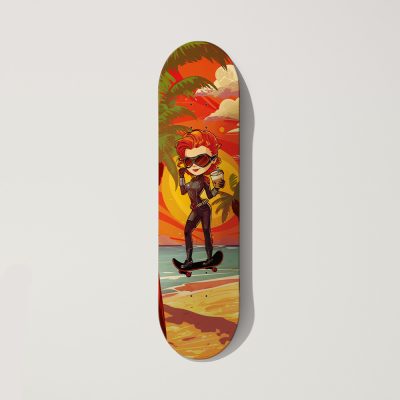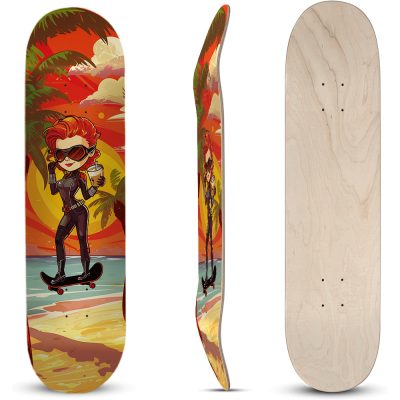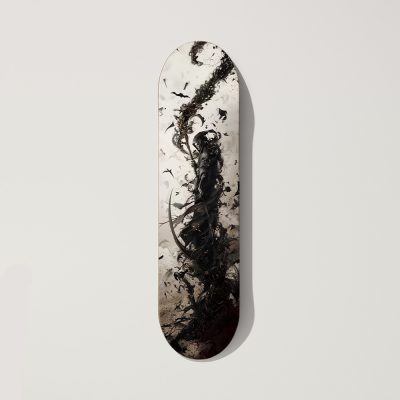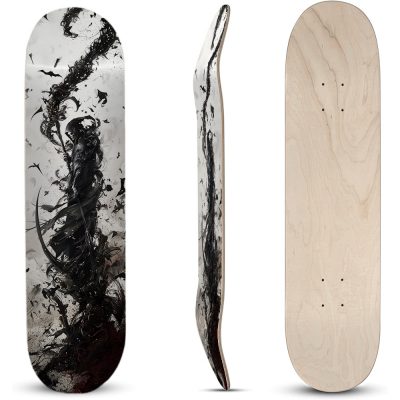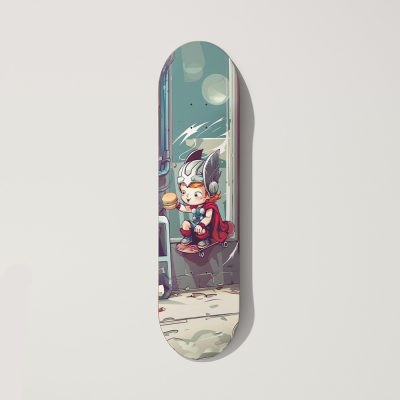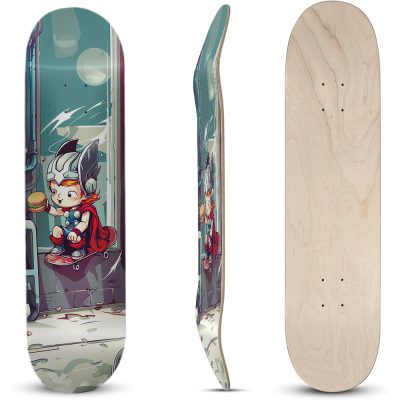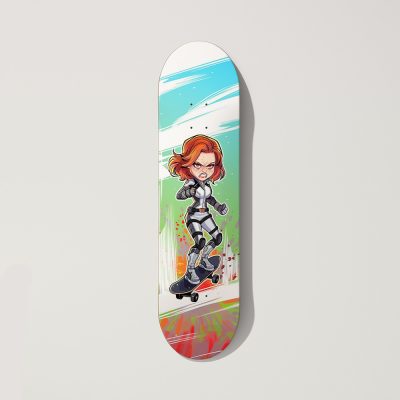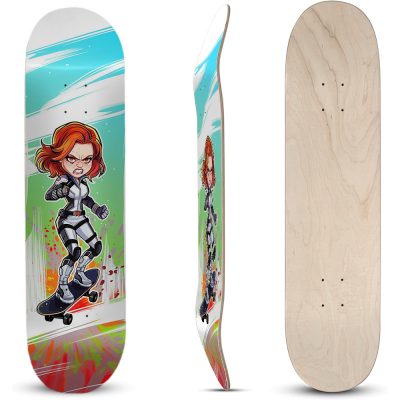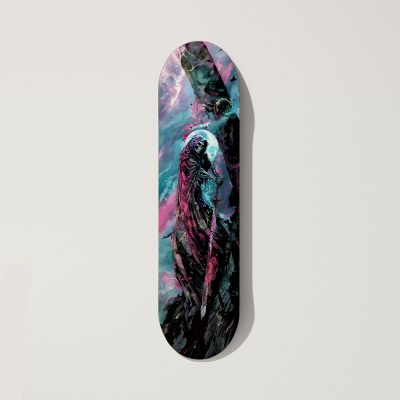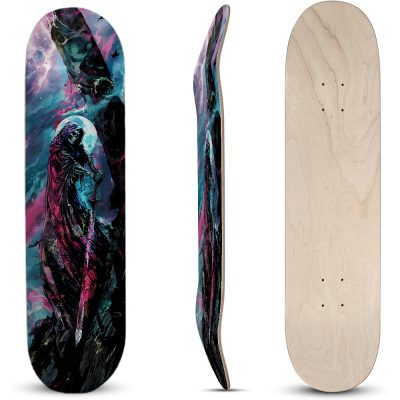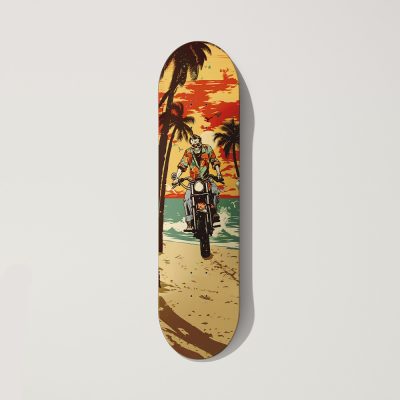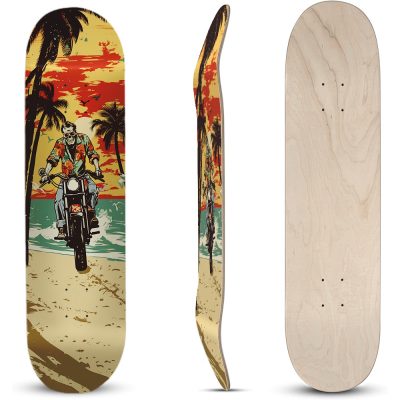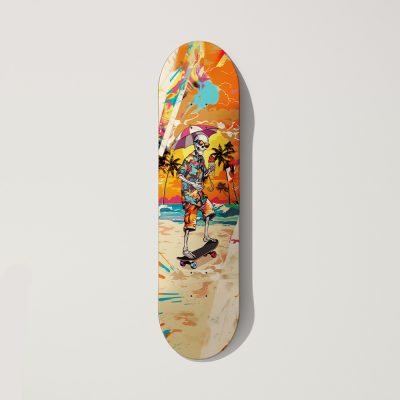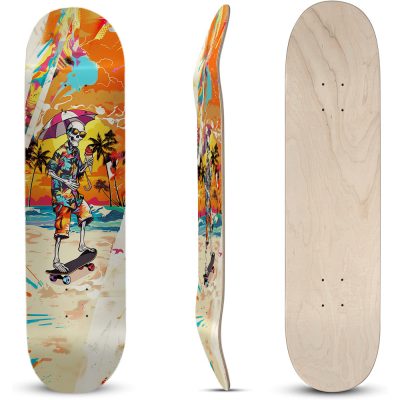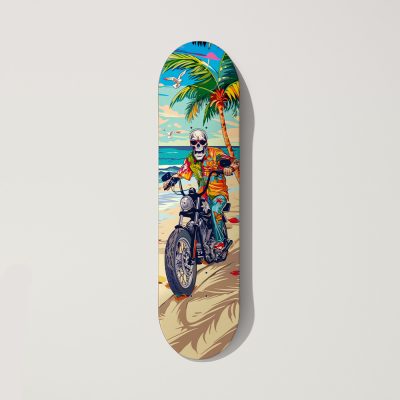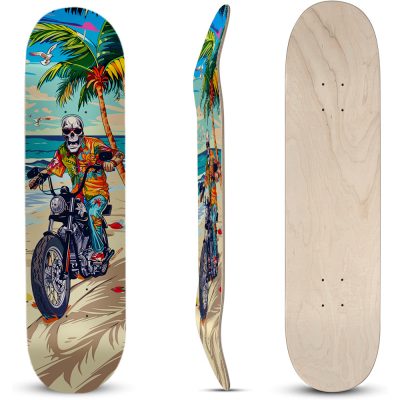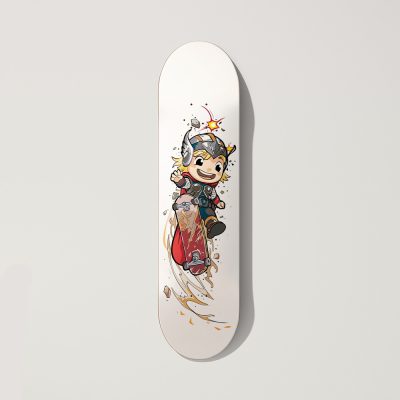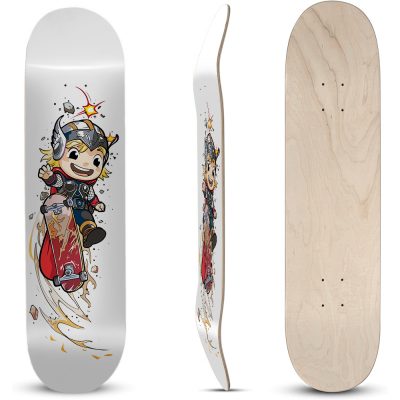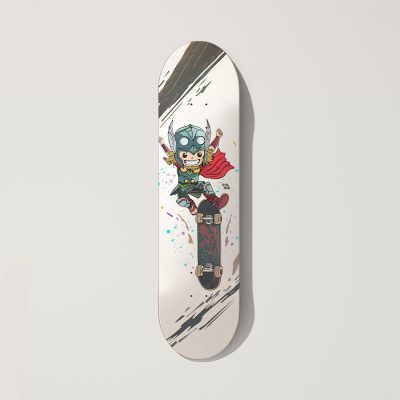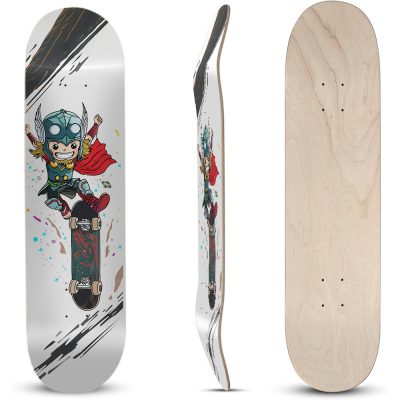No products in the cart.
Have you ever wondered what makes a steep concave skateboard deck stand out in the bustling world of skateboarding? Well, we’ll help you unravel the mysteries behind this unique design, exploring its perks, differences from other decks, and what factors to consider when picking one. Whether you’re a seasoned pro looking to up your game or a newbie eager to learn, join us as we skate through the exhilarating world of steep concave decks and discover how they can elevate your shredding experience to new levels!
Steep Concave Skateboard Deck: What Is It?
A steep concave skateboard deck is characterized by its pronounced upward curve along the length of the board. Imagine the sides of the deck curving upwards sharply, forming a deep "U" shape. This design creates a more dramatic arch compared to traditional decks, which tend to have a flatter profile.
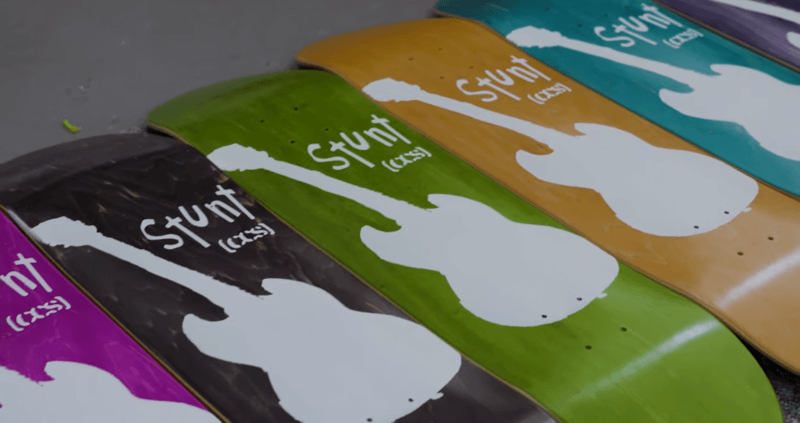
Advantages of Steep Concave Decks
- Enhanced Control: The steep concave shape cradles your feet, providing a snug fit that enhances control over the board. Whether you're carving through tight transitions or executing complex flip tricks, the concave shape keeps your feet firmly planted, reducing the risk of slipping or losing control.
- Increased Pop: The exaggerated curve of the deck generates more pop, allowing for higher ollies and more responsive flip tricks. This extra spring-like effect enables skateboarders to achieve greater heights and execute tricks with greater precision and style.
- Improved Foot Lock-In: Riders often appreciate the feeling of being "locked in" to their board, especially during technical maneuvers or when riding at high speeds. The steep concave profile cradles the arches of your feet, creating a secure foothold that promotes confidence and stability.
- Responsive Feel: Steep concave decks offer a responsive and lively feel underfoot. The pronounced curvature translates subtle shifts in weight into immediate responses from the board, making it easier to control and maneuver with precision.
- Versatile Performance: While steep concave decks are favored by street skaters for their responsiveness and control, they also perform admirably in transition and park skating. The enhanced pop and control make them well-suited for navigating ramps, bowls, and other obstacles with confidence and style.
Differences Between Steep Concave and Other Types
- Mild Concave: Mild concave decks have a gentler curve compared to steep concave decks. They offer a more neutral platform that appeals to riders who prefer a less pronounced concave profile. While mild concave decks may sacrifice some of the responsiveness and control of steep concave designs, they excel at providing a stable and comfortable riding experience.
- Flat Decks: Flat decks, as the name suggests, have minimal curvature along their length, resulting in a flat profile. These decks prioritize stability and predictability, making them popular among beginners and cruisers who value a relaxed riding experience over technical performance. However, flat decks may lack the responsiveness and pop of concave designs, limiting their suitability for advanced tricks and maneuvers.
- W-Concave: W-concave decks feature an additional concave contour in the center of the deck, forming a subtle "W" shape when viewed from the side. This design provides extra support and control for the rider's front foot, particularly during slides and downhill riding. While not as pronounced as steep concave decks, W-concave designs offer a balance of stability and responsiveness favored by many freestyle and downhill skaters.
Factors to Consider When Choosing Skate Decks With Steep Concave
When choosing a steep concave skateboard deck, several factors come into play. These include the depth of the concave, your riding style, foot size, board width, materials and construction, brand reputation, personal preference, reviews and recommendations, and budget. The concave depth influences control and comfort, with deeper concaves providing more leverage but potentially feeling less comfortable. Consider your riding style, foot size, and board width to ensure the deck suits your needs. Quality materials and construction enhance durability and performance. Brand reputation and reviews offer insights into the deck's reliability and performance, while personal preference and budget ultimately dictate your choice.

Deck Size and Width
The size and width of your skateboard deck play a crucial role in determining how it feels under your feet and how well it suits your skating style.
- Width: Deck width typically ranges from 7.5 inches to over 9 inches, with variations catering to different preferences and disciplines. A narrower deck (7.5" to 8") offers agility and responsiveness, making it ideal for technical street skating and flip tricks. In contrast, wider decks (8.25" and above) provide more stability and surface area, enhancing control for transition skating and cruising.
- Length: While deck length is generally standardized at around 31 to 33 inches, some models may vary slightly. Longer decks offer more stability for high-speed riding and transition skating, while shorter decks prioritize maneuverability and agility for street skating and technical tricks.
Material and Construction Quality
The material and construction quality of your skateboard deck directly impact its performance, durability, and resilience to wear and tear.
- Wood: Most skateboard decks are constructed from layers of maple wood, renowned for its strength, flexibility, and resilience. High-quality maple decks are durable, responsive, and capable of withstanding the rigors of skateboarding.
- Construction: Pay attention to the deck's construction method, such as how the layers of wood are bonded together. Quality decks are typically made using cold-pressed or epoxy resin techniques, ensuring a strong and consistent bond between layers.
Durability and Longevity
Skateboarding can be hard on your gear, so durability is a critical consideration when choosing a deck that can withstand the demands of your skating style and frequency.
- Ply Count: Opt for decks with a higher ply count (usually 7 or 8 plies) for increased strength and resilience. Thicker decks are less prone to snapping or delamination, making them suitable for aggressive skating and high-impact maneuvers.
- Graphics: While graphics add personality to your deck, be mindful that elaborate designs may affect the deck's durability. Look for decks with high-quality graphics that are heat-transferred or silk-screened for longevity, avoiding decks with stickers or low-quality prints that can peel or fade quickly.
Personal Preference and Comfort
Ultimately, the best skateboard deck is one that feels right for you, reflecting your skating style, preferences, and comfort.
- Shape: Experiment with different deck shapes, such as steep concave, mellow concave, or even double kicks, to find the profile that suits your feet and riding preferences. Consider whether you prefer a steeper concave for enhanced control and pop or a flatter profile for a more relaxed feel.
- Brand and Reputation: Choose reputable skateboard brands known for their quality, craftsmanship, and commitment to skateboarding culture. Research customer reviews and rider feedback to gauge the reputation and performance of different deck brands and models.
FAQ
Is a Steep Concave Deck Right for My Skill Level?
Steep concave decks are generally favored by more experienced skaters. They provide greater control and responsiveness, which can be beneficial for executing advanced maneuvers and tricks. However, beginners might find them less stable and more challenging to control compared to flatter decks. It ultimately depends on your comfort level and how quickly you adapt to the feel of a steep concave.
Does a Steep Concave Deck Reduce Foot Fatigue During Long Skate Sessions?
Yes, a steep concave deck can help reduce foot fatigue during long skate sessions. The pronounced curvature of the deck allows your feet to sink comfortably into the concave, providing better support and grip. This can alleviate strain on your feet and legs, allowing you to skate for longer periods without discomfort.
How Does Rider Weight Impact a Steep Concave Deck’s Performance?
Rider weight can affect the performance of a steep concave deck. Heavy riders may find that the deck flexes differently under their weight compared to lighter riders. Additionally, heavier riders might experience less pronounced concave due to their weight pressing down on the deck. However, many modern decks are designed to accommodate a wide range of rider weights, so the impact may not be significant for most skaters.
Can a Steep Concave Deck Accommodate Various Skating Styles?
Yes, a steep concave deck can accommodate various skating styles. Whether you prefer street skating, vert skating, freestyle, or downhill, a steep concave deck can provide the control and responsiveness needed to perform different maneuvers and tricks. However, it's essential to choose a deck width and shape that align with your specific skating style and preferences. Additionally, some skaters may find that certain styles require adjustments to their setup, such as wheel size or truck tightness, to optimize performance on a steep concave deck.

